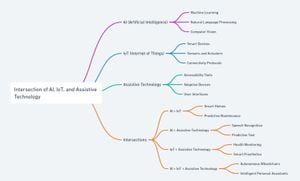The cryptocurrency market is reeling after experiencing significant drops across various digital assets, with Bitcoin and Ethereum leading the way downwards. On January 28, 2025, Bitcoin struggled to maintain its status around $100,000, succumbing to market pressures and pulling the broader crypto ecosystem along with it.
According to recent reports, Bitcoin's price fell below $100,000 for the first time since mid-January, dropping by 6.7% from nearly $105,000 to around $97,900 early Monday before stabilizing slightly above $99,000. Ethereum was not spared either, with its price hitting lows around $3,024 after dropping nearly 9.4%. Ripple’s XRP also faced significant losses, dropping below the $3 mark to $2.72, marking over 10% declines.
This sharp downturn has been attributed to several intertwining factors. Investors are anxious about upcoming policy decisions from the U.S. Federal Reserve and the macroeconomic environment, compounded by fears of instability within tech industry valuations. The sudden market turbulence was initially sparked by the success of DeepSeek, a Chinese AI application, which captivated downloading attention and undercut confidence in U.S. tech dominance, leading to subsequent stock sell-offs.
Market observers pointed out how the recent tech sector turmoil has directly impacted the crypto world. Standard Chartered's Geoff Kendrick noted, “Bitcoin remains strongly correlated to Nasdaq, much more so than it does to gold.” This highlights how intertwined the fortunes of high-risk tech stocks and cryptocurrencies have become, as fears of investor flight from tech can ripple through to the crypto space.
Investors had hoped for supportive policies from President Donald Trump as he reentered the office. His presence was expected to bring more favorable regulations and pro-business policies to the cryptocurrency sector. But disappointment mounted following Trump’s inauguration speech, during which he made no mention of cryptocurrencies. This silence left many feeling uncertain about the future of digital assets, catalyzing widespread selling activity.
The swift market reaction to the perceived absence of direction from the administration reflects broader concerns. With Bitcoin’s price hovering around $100,000 and meme coins like TRUMP and MELANIA suffering steep declines, investor sentiment has soured tremendously.
On the liquidation front, over $28 billion was wiped from the market, indicating the extent of sellers reacting to this uncertainty. The total crypto market cap is reported to have slipped by nearly 5.2%, illustrating the loss of confidence among investors. The market had previously surged following Trump's election victory, but now, with no supportive signals, optimism has quickly evaporated.
Cryptocurrency enthusiasts are left questioning the market’s direction amid these drops. The lack of clear communication and tangible support from the new administration could pose longer-term challenges. Arthur Hayes, a prominent crypto investor, expressed caution, predicting Bitcoin could see corrections down to $70,000-$75,000 before possibly bouncing back strongly over time. “If the Fed eases monetary policy, Bitcoin could still reach lofty heights,” he stated.
Going forward, traders are bracing for more volatility. With the Federal Reserve's next meeting on the horizon, many are left wondering how those decisions might impact investment sentiment across both stocks and cryptocurrencies. Joel Kruger, market strategist at LMAX, noted, “Investors are hoping the Fed will lean more to the accommodative side but are fearful the Fed won't be as dovish as what the market would like to see.”
With heightened awareness of these economic factors, and with the uncertainty surrounding future policies, the cryptocurrency market faces not just operational challenges but also substantial trust and confidence issues. Whether the market can recover from the steep losses or will continue down this uncertain path remains to be seen. The inherent risks of speculation without solid backing will likely keep investors on high alert, making the market exceptionally sensitive to both political signals and stock market performance.



